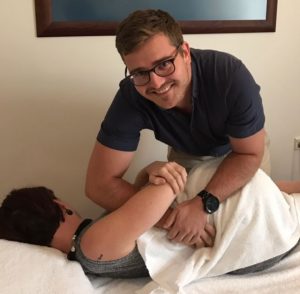Photo credit official instagram of the AFL. @afl
Injuries in the game of AFL are increasingly common year after year, and can be the difference between a win and a loss. Last week I wrote about one of the most common injuries hamstrings and in particular overstretched hamstrings. (read it here) This week i’ll explain to you a popular exercise that aims to tackle and reduce this common injury.
THE SUPPLE ‘POSTERIOR CHAIN’
The ‘posterior chain’ is comprised of some of the powerhouse muscles which are critical to movement; Lower back muscles, glutes, hamstrings and calves. Whether it be at the start of the season or coming into finals time, you want strong, supple hamstrings and calves that won’t let you down. As mentioned in our previous post, eccentric exercises are the gold standard in order to achieve this. Why are they gold standard? Whether you’re watching AFL on TV or standing at the other end of the ground because the ball is in the opposing 50m, hamstring strains occur when players are running and/or getting ready to jump. Slow motion studies conducted by Schache (et. al. 2010) showed that when running, during the late-swing phase, the hamstrings are acting eccentrically to slow the lower leg. This is proven to be the point where most hamstring strains occur, hence the reasoning why eccentrically strengthening out hamstrings is beneficial to preventing hamstring strains. A brief overview of the physiology of eccentric exercises was covered in our previous post. Well, how do I ‘eccentrically strengthen’ my hamstrings then? The Nordic Hamstring Exercise (NHE) is the most popular exercise, as well as best researched. You may have seen a video or two of this being done by athletes, as it’s a good measure of overall hamstring strength. What the high quality studies have shown is that by performing the NHE, you can achieve an 11% increase in eccentric hamstring strength, a 65% reduction in hamstring strains, as well as an 85% lower rate of recurrent hamstring strains compared to a control group following their usual training program. 1 2 3 This link will take you to a few variations of the Nordic Hamstring Exercise:
Is that it? Do this and I won’t have to worry about my hamstrings again?
Long answer short, not exactly. The Nordic Hamstring Exercise will target both hamstrings, whereas one leg may need it more than the other. Kicking off your preferred leg constantly uses a group of muscles on one side of the lower extremity, there as the non-preferred leg doesn’t get the same attention. This can vary the flexibility and strength of either hamstring muscle group. If you are really dominant on one side, whilst doing the NHE, the dominant muscle may be doing the bulk of the work, as it is able to compensate for the opposing hamstring. An Osteopath is able to assess your hamstrings and any compensatory strains/patterns going on in your body, in order for you to get the most out of exercise you do. What about calves? Your calves are another important muscle making up your ‘posterior chain’. The calf muscle responds really well to eccentric exercise like the hamstring does. One of the best ways to eccentrically strengthen your calves involves standing on your tiptoes and letting your heel drop down below the forefoot. This is the eccentric part. After lowering your foot past the step, take the weight off the ankle with the opposing foot and continue doing the lengthening of the calf. This is great as it can give you a larger range of motion in the ankle.  Dr Chris Fielder – Osteopath (B. Clin. Sc, M. Osteo) Chris is an Osteopath practicing at MOVE Osteopathy in Brisbane CBD. He has an interest in all things AFL and loves to help people playing AFL at all levels to perform better and enjoy their sport. If you love playing your footy have an injury or want to avoid injury and perform better make an appointment to see Chris ph: 3229 3661 and stay tuned for more great posts from Chris on this topic.
Dr Chris Fielder – Osteopath (B. Clin. Sc, M. Osteo) Chris is an Osteopath practicing at MOVE Osteopathy in Brisbane CBD. He has an interest in all things AFL and loves to help people playing AFL at all levels to perform better and enjoy their sport. If you love playing your footy have an injury or want to avoid injury and perform better make an appointment to see Chris ph: 3229 3661 and stay tuned for more great posts from Chris on this topic.
References: 1.Mjølsnes R, Arnason A, Østhagen T, et al. A 10-week randomized trial comparing eccentric vs. concentric hamstring strength training in well-trained soccer players. Scand J Med Sci Sports 2004;14(5):311-317. 2.Arnason A, Andersen TE, Holme I, et al. Prevention of hamstring strains in elite soccer: an intervention study. Scand J Med Sci Sports 2008;18(1):40-48. 3.Petersen J, Thorborg K, Nielsen MB, et al. Preventive effect of eccentric training on acute hamstring injuries in men’s soccer: a cluster-randomized controlled trial. Am J Sports Med 2011;39(11):2296-2303.
